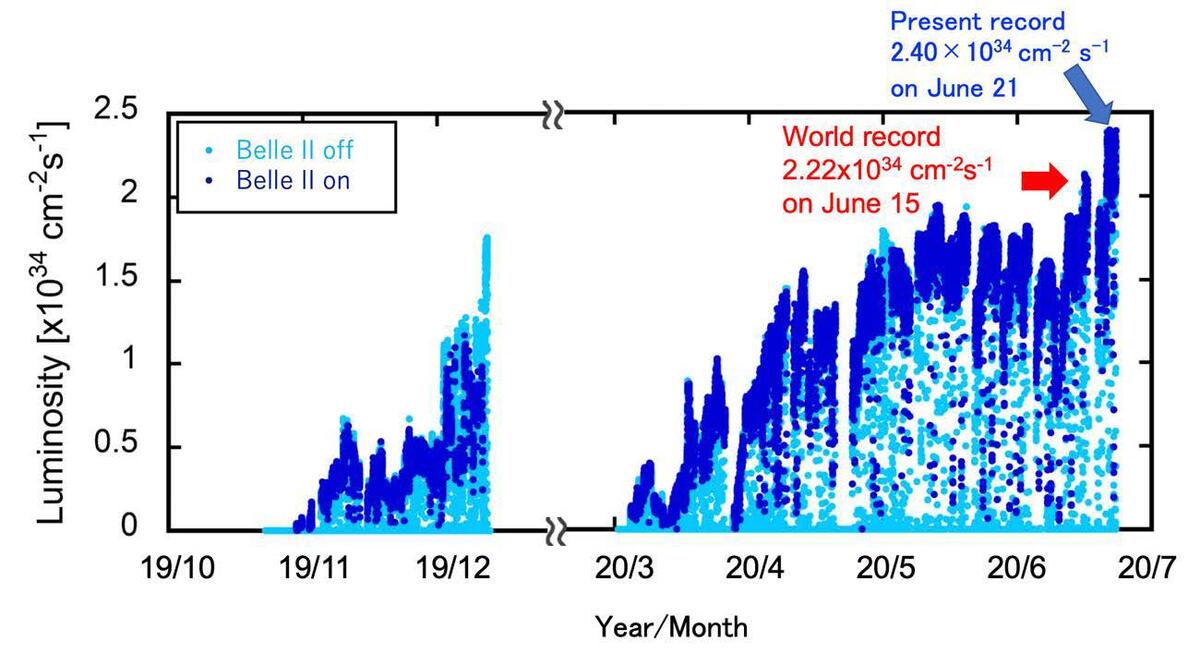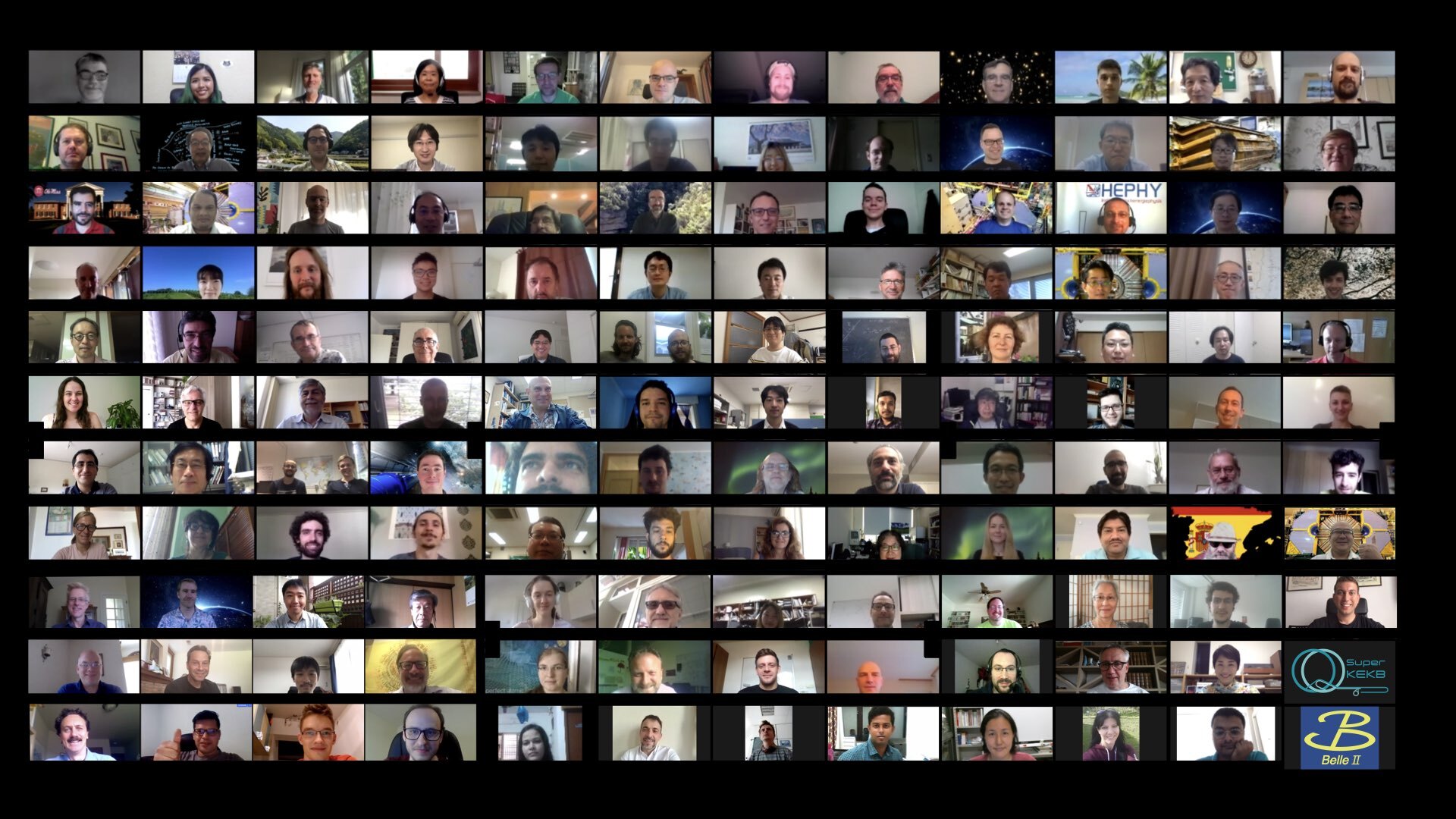 The instantaneous luminosity of SuperKEKB measured at 5-minute intervals from Fall 2019 to June 22, 2020.
The instantaneous luminosity of SuperKEKB measured at 5-minute intervals from Fall 2019 to June 22, 2020. Values are on-line measurements and contain an approximate 1% error. ©KEK
SuperKEKB has achieved the world's highest instantaneous luminosity for a collider-type particle accelerator, setting a record of 2.22×1034 cm-2s-1 at 20:34 JST on June 15, 2020. The previous world record was 2.14×1034 cm-2s-1 , set by the LHC proton-proton collider at the European Organization for Nuclear Research (CERN). SuperKEB has broken the record to hold the highest luminosity performance among all of collider-type particle accelerators. Eventually, the accelerator was smoothly tuned and successfully recorded the further highest luminosity of 2.40×1034 cm-2s-1 at 0:53 JST on June 21.
In the SuperKEKB/Belle II collaboration, the N-lab staff and students have contributed to this achievement, for instance, the run coordination and the investigation of background particles from beams by analyzing data from the TOP counter, which is a crucial issue to avoid degrading the detector performance.
The SuperKEKB accelerator will keep on improving the performance by continued tuning and upgrading of equipment. Our ultimate goal is to achieve instantaneous luminosity over 10 times greater than the current one. The N-lab members will be involved in background research and other developments continuously to accomplish the goal.
Many physics analyses with the Belle II detector are also aggressively in progress. Stay tuned for future results using the physics data obtained under the world's highest luminosity.
Please refer to the press release from Japan's High Energy Accelerator Research Organization (KEK) to find more information.
Kazuki Kojima (Graduate School of Science)
Collaborators rejoicing over the world record


